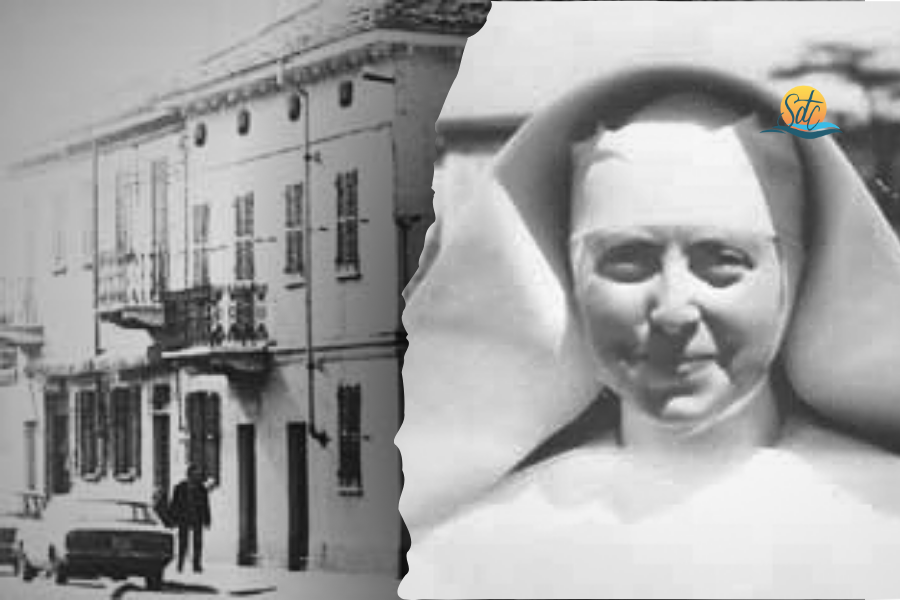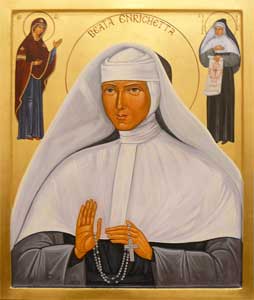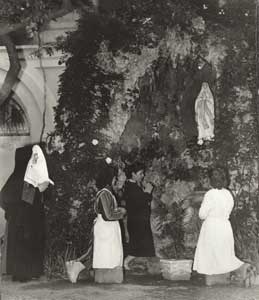On this occasion, we want to learn from Enrichetta some spiritual “secrets” she discovered and internalized during the serious illness that struck her, still at the beginning of her religious life.

Maria Alfieri is carefully educated by her deeply christian parents; she lives her childhood by attending an elementary school ; during her adolescence she spends her time doing either housework or working in the fields, as it was common in those days ; besides she becomes an expert in art and embroidery ; thus she forms a character which is at once gentle and strong.
When she was about 17 years old, she thinks of religious life but her parents invite her to reflect and to wait. These years strengthen her decision to give herself totally to God.
On the 20th December, 1911, the twenty year old Maria, enters as postulant in the Congregation of the Sisters of Charity in the Monastery «Santa Margherita» in Vercelli.
The Superiors see in Sr.Enrichetta a strong inclination to education : on the 12th July1917, she receives the Authorisation Diploma in Elementary School Teaching. Afterwards, she is sent as educator in the Kindergarten School « More » in Vercelli. Only a few months later, she is obliged to leave the school because of health problems.
Having been transferred to the Provincial House of Vercelli, the seriousness of her disease isn’t diagnosed immediately. In April 1920, she is accompanied to Milan to for thorough treatment and special tests, but without big results. A serious disease is finally diagnosed: it’s a degenerating spondylitis. She is sent to the infirmary of the Provincial House of Vercelli and her condition continues to deteriorate. In fact she is immobilised and in great pain for more than three years.

As from this moment, the life of Sr.Enrichetta appears strongly marked by suffering which she herself considers as Jesus’ privilege on her behalf, hence rendering her similar to him:
«If by vocation we are established on the Calvary, by illness we are on the Cross with Jesus – we read in her notes – The bed must be considered as the sacrifice altar on which we must immolate ourselves and let ourselves be immolated like peaceful hosts and victims of love. It is therefore necessary to suffer in a holy manner for the benefit of the spirit and of virtue. Suffering is not enough; it’s necessary to suffer a lot and to do so it is necessary to suffer with dignity, with love, gentleness and intensity».
In May 1922, just as they declare that her disease is incurable, Sr. Enrichetta is sent on a pilgrimage to Lourdes « in the hope, writes the provincial superior, that the young sister, this angel of gentleness, could be healed or encouraged through the Most Holy Virgin…». She comes back without being healed, but she feels the effects of the grace of the Spirit because every day she feels stronger while accepting her immolated sacrifice.

During this suffering period, the characteristic features of her spirituality emerge : participation in the Passion of Christ through the Cross; fidelity in Love; serene self-surrender to God’s Will manifested by her constant smile and by the simplicity with which she lives the Calvary’s experience. «The true religious, when faced by the Cross or penetrated by the sword, always answers with a smile» she writes in her notes.
In January 1923, the doctor who visits Sr.Enrichetta declares that she is about to die. On the 25th February, day of the ninth apparition of Our Lady of Lourdes, at 8 o’clock, while the community was hearing the Sunday mass, Sr.Enrichetta, destroyed by the utter sufferings, makes a great effort and drinks a drop of water of Lourdes. After a brief fainting, she hears a voice telling her: «Get u». She gets up immediately as she is free from pain and paralysis. She writes: «…The good heavenly Mother made me reappear miraculously from death to life. Feeling of: gratitude, marvel, disappointment. The doors of Heaven are closed, those of life are opened up again ». There is big joy and wonder on behalf of the sisters in front of the extraordinary event. The consulted doctors declare the clinical healing and acknowledge the impossibility to give an explanation.
While her health conditions improve, the Superiors, to avoid encouraging the increase of the enthusiastic religious manifestations occurring in the city due to this miraculous event, send Sr. Enrichetta to the detention House of Saint Victor in Milan.
In the Epistle of James, we find “He who is sick, let him call the presbyters of the Church to him, and let them pray over him, anointing him with oil in the name of the Lord. And the prayer made in faith will save the sick person: the Lord will lift him up, and if he has committed sins, they will be forgiven him” (Jas. 5:14-15). It is not said in the text that the sick person will be healed of any infirmity, but that the faith expressed in prayer will “save the sick person” and that the “Lord will lift him up.” The two verbs “save” and “lift up” may refer to bodily health and physical restoration, but their meaning is broader.
With this gesture, the sick person receives help to go through the trial and enter the life that Christ proposes (cf. Jn. 20:31) For sister Enrichetta, in fact, a new life in Christ began alongside inmates of the San Vittore prison in Milan.
May the Lord grant us to welcome bodily and spiritual healings to enter into the life that Christ proposes.






